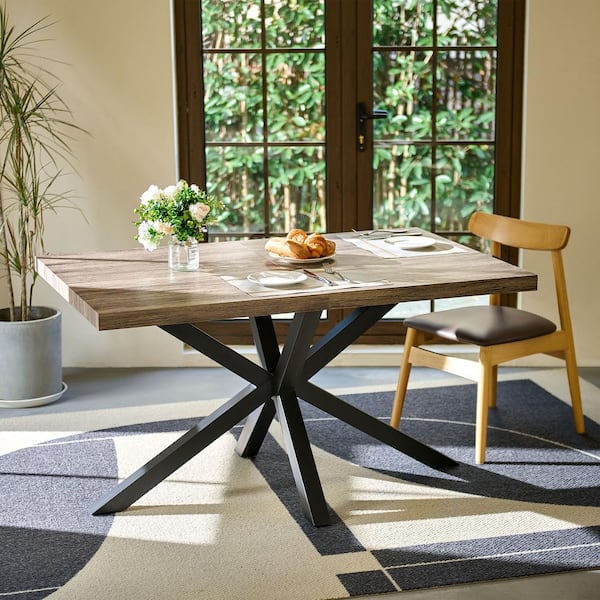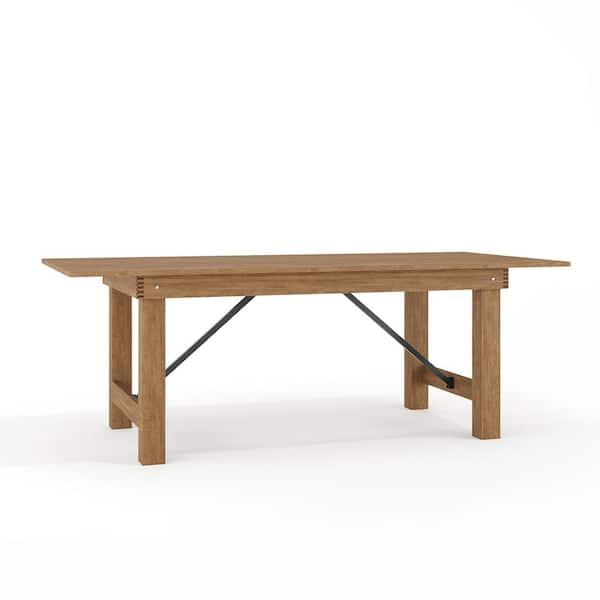Discover Affordable Sophistication in High-Quality Dining Table Legs Wood
Crucial Considerations for Picking the Right Dining Table Legs Timber
Picking the appropriate wood for dining table legs involves a nuanced understanding of various factors that influence both functionality and aesthetic appeal. The choice of wood type, ranging from durable woods to extra fragile softwoods, plays a crucial duty in making certain resilience and stability. Each of these elements can significantly impact the overall experience of your dining room.
Relevance of Timber Kind

Hardwoods, such as oak, walnut, and maple, are typically liked for their stamina and resistance to use. These types of wood offer a robust foundation that can withstand daily usage, making them ideal for eating tables that experience constant celebrations. In comparison, softer woods like yearn may be more susceptible to scrapes and dents, which may not be ideal for high-traffic locations.
Additionally, the option of wood can also impact the convenience of upkeep. Some woods require normal oiling or securing to protect their appearance, while others might be extra flexible. Eventually, selecting the ideal timber type involves stabilizing aesthetic considerations with sensible demands, making sure that the table legs not just look enticing however also stand the examination of time.
Evaluating Stability and Toughness
When examining dining table legs, one have to think about the stability and stamina they provide to the total structure. The legs are critical in sustaining the tabletop and making certain the dining experience is enjoyable and risk-free. A stable table is necessary for avoiding tipping or tottering, which can result in spills or crashes during dishes.
The choice of timber kind considerably influences strength. Woods such as walnut, maple, and oak are usually more robust and sturdy than softwoods like pine or fir. Furthermore, the thickness and design of the legs play a crucial role; thicker legs or those with a tapered layout can use far better assistance and security.

Visual Considerations
While capability is critical, the visual allure of dining table legs can not be forgotten, as they considerably affect the overall style and setting of the eating space. The option of coating, style, and timber can enhance or detract from the table's aesthetic influence.

Finishes likewise play a crucial function in visual appeals. An all-natural finish can highlight the wood's innate elegance, while painted or discolored useful source legs can present color and character right into the room. The proportion and scale of the legs family member to the table top and bordering furnishings must be considered to make sure aesthetic equilibrium and communication.
Inevitably, the eating table legs should not only serve a practical function however additionally add to a natural and welcoming ambience, making them a vital consideration in the overall style of the dining area.
Upkeep Demands
To make sure long life and maintain the elegance of wooden table legs, routine maintenance is necessary (Dining Table Legs Wood). Timber is a natural material that can be prone to damage from wetness, warm, and use. For that reason, developing a routine care plan will significantly enhance the resilience of your table legs.
Begin with normal dusting using a soft, lint-free cloth to remove dust and particles that can scrape the surface. For even more detailed cleansing, use a mild soap remedy and damp fabric, staying clear of excess moisture that can leak into the timber. It is a good idea to apply a premium wood gloss or conditioner every few months to nurture the timber and maintain its gloss.
Deal with any kind of damages or scratches quickly with ideal wood filler or touch-up pens to stop further wear and tear. By sticking to these maintenance requirements, you will certainly not just preserve the aesthetic allure of your wood dining table legs however additionally extend their practical life expectancy.
Budget Plan and Price Variables
Budget and cost elements often play a critical duty in the decision-making process for selecting wooden dining table legs. When assessing choices, it is necessary to develop a clear spending plan that straightens with your total furnishings financial investment. The expense of wood table legs can vary substantially based on the sort of craftsmanship, design, and timber complexity.
Hardwoods such as cherry, walnut, and oak typically regulate greater costs due to their resilience and aesthetic allure. On the other hand, softer woods like pine might be extra budget friendly yet look at this web-site may not offer the very same long life. Additionally, custom or artisan-crafted legs can sustain extra prices, showing the skill and time bought their development.
It is likewise important to take into consideration the prospective long-term worth of your investment. While opting for lower-cost products might appear economically prudent at first, they may call for more constant replacement or repairs, eventually increasing total expenditure.
Consequently, balancing top quality and expense is essential. Focus on products that satisfy your visual preferences while guaranteeing they fit comfortably within your spending plan, allowing you to produce a dining area that is both useful and visually attractive.
Conclusion
To conclude, picking the suitable timber for dining table legs requires mindful consideration of different variables, including timber type, security, aesthetic appeals, upkeep, and budget. Hardwoods such as oak and walnut give superior sturdiness and toughness, while design and thickness add to total security. Aesthetic charm and upkeep needs have to align with private preferences and way of living. Inevitably, a well-informed decision will improve the long life and aesthetic allure of the table, guaranteeing fulfillment and performance for several years to come.
Choosing the right kind of timber for eating table legs is vital for both visual charm and structural integrity. Inevitably, picking the proper wood type entails stabilizing visual considerations with practical requirements, making certain that the dining table legs not just look enticing but also stand the examination of time.
It is advisable to apply a premium timber gloss or conditioner every few months to nourish the timber and keep its appeal.
The visit their website expense of wooden eating table legs can differ dramatically based on the type of workmanship, wood, and design intricacy.
In conclusion, picking the proper wood for eating table legs necessitates cautious consideration of numerous elements, consisting of wood kind, stability, appearances, maintenance, and spending plan.